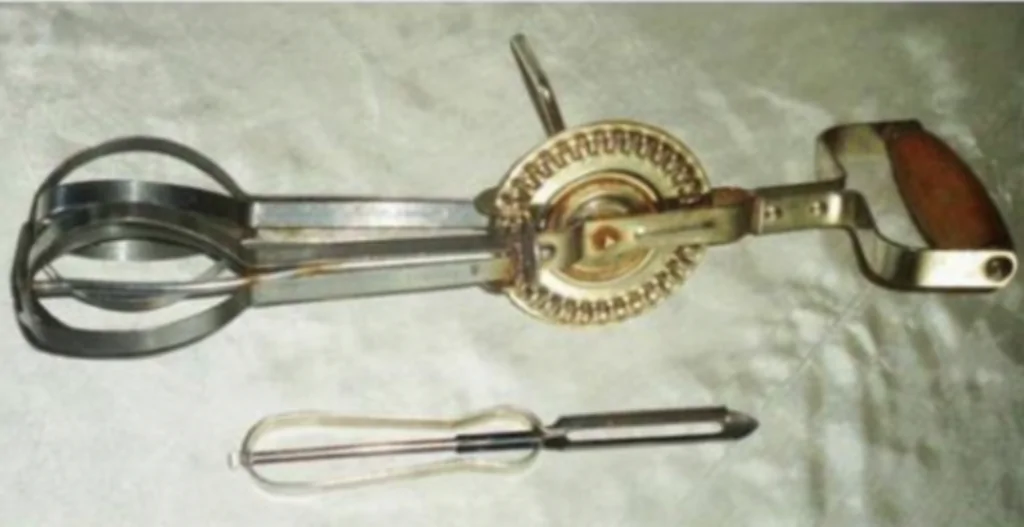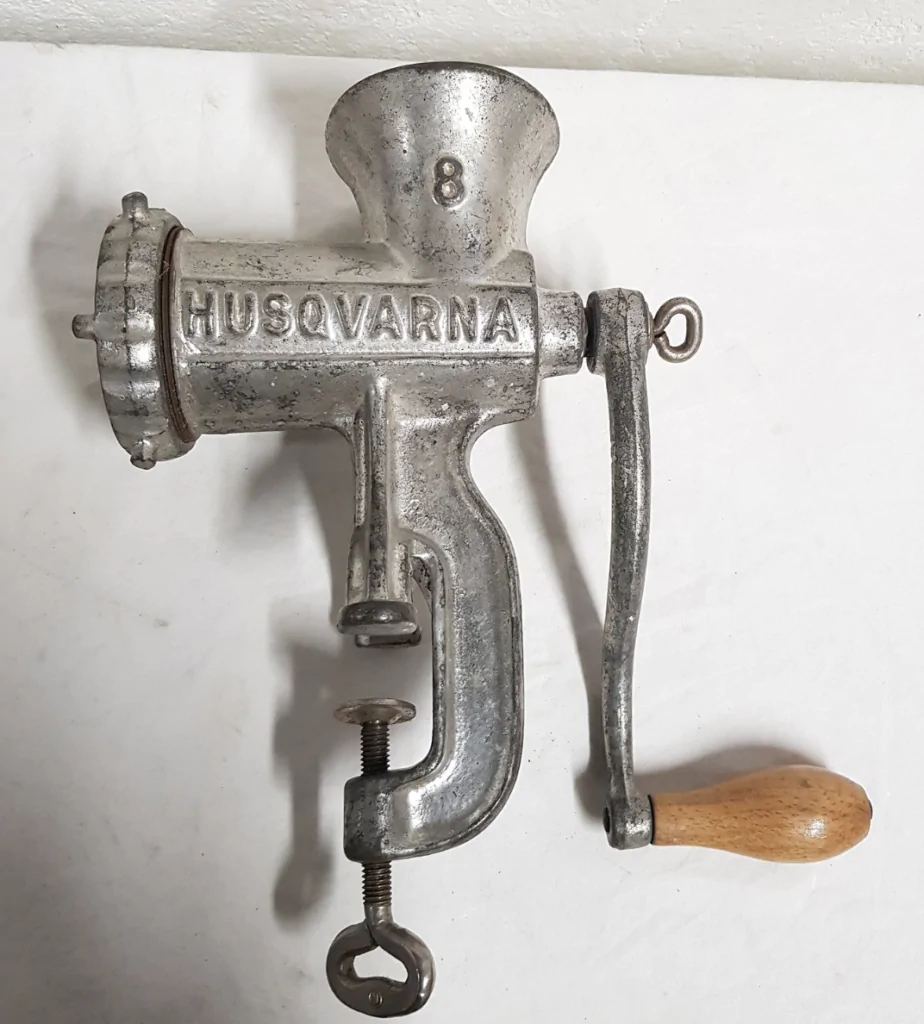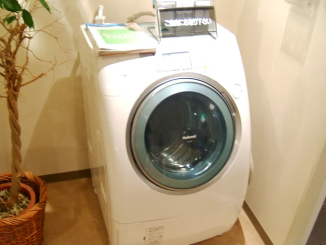Have you ever stopped to think how the kitchen tools we rely on every day came to be? Today, let’s take a trip back in time to explore the fascinating history of one such essential appliance: the mixer.
The Early Days of Mixing
Our story begins in the mid-19th century when inventors across the globe were experimenting with ways to make the process of mixing ingredients easier and more efficient. In 1856, Ralph Collier, a tinner from Baltimore, patented the first mixer with rotating parts. Just a year later, E.P. Griffith introduced the whisk, a revolutionary tool for blending ingredients. The Monroe brothers, J.F. and E.P., also made their mark with their hand-turned rotary egg beater, which was granted a patent in the United States in 1859.

These early designs caught the attention of the Dover Stamping Company, who acquired the Monroe Brothers’ patent. The Dover egg beaters became a beloved American brand, known as the “Dover beater.” These beaters were held in such high regard that even a recipe from the Gazette newspaper of Cedar Rapids, IA in February 1929 featured the famous Dover beater in a delightful dessert recipe called “Hur-Mon Bavarian Cream.”
Enter the Electric Era
It wasn’t until 1885 that the first electric mixer made its debut, thanks to the ingenious mind of American inventor Rufus Eastman. However, it was the Hobart Manufacturing Company that truly revolutionized the industry with their large commercial mixers. In 1914, they introduced a groundbreaking new model that forever changed the landscape of mixers.
In the early 20th century, two notable American brands, the Hobart KitchenAid and the Sunbeam Mixmaster, became popular choices among consumers. But despite their popularity, domestic electric mixers were still a rarity in most households until the 1920s when they began to be widely adopted for home use.
The Stand Mixer: A Game Changer
In 1908, Herbert Johnston, an engineer for the Hobart Manufacturing Company, had a eureka moment while observing a baker mix bread dough with a metal spoon. He realized there had to be a better way and set out to create a mechanical counterpart to simplify the process.
By 1915, Johnston’s 20-gallon mixer had become standard equipment in most large bakeries. Just four years later, in 1919, the Hobart Manufacturing Company introduced the Kitchen Aid Food Preparer, which went on to become known as the stand mixer. This revolutionary invention quickly became a staple in kitchens across the country.
From the hand-turned rotary beaters of the 19th century to the introduction of electric motors and the birth of the stand mixer, this essential kitchen tool has come a long way. It has undergone numerous innovations to make our lives easier in the kitchen.
So, the next time you whip up a batch of cookies or blend together a mouthwatering cake batter, take a moment to appreciate the rich history behind your trusty mixer. It’s a testament to human ingenuity and the desire to simplify everyday tasks.

In addition to the mixer, another versatile kitchen tool that has a fascinating history is the meat grinder. Also known as a “meat mincer” in the United Kingdom, this appliance has been used for mincing and mixing raw or cooked meat, fish, vegetables, and more.
The journey of the meat grinder dates back to the nineteenth century when Karl Drais invented the first version of this remarkable tool. Initially, meat grinders were hand-cranked, pushing the meat through a metal plate with small holes, resulting in long, thin strands of flesh.
With advancements in technology and the widespread availability of electricity, manufacturers began creating powered meat grinders. These modern electric grinders enable the seamless and uniform processing of several pounds of beef. Some models even come with attachments that add functionality, such as sausage-making, kibbe, and juicing, which has dramatically expanded the range of applications for meat grinders.
So, the next time you’re mincing meat for a savory dish or experimenting with homemade sausages, remember the journey and ingenuity behind your meat grinder. It’s a testament to how kitchen tools have evolved to make our culinary adventures more accessible and enjoyable.
After three years of trying and failing to get pregnant, we finally bought our first house and decided to adopt a fur baby

The worn, wooden rocking chair creaked rhythmically as I swayed, the rhythmic motion a comforting counterpoint to the storm raging outside. Rain lashed against the windows, mirroring the tempest of emotions swirling within me. Three years. Three long, heartbreaking years of trying. Three years of doctor’s appointments, of whispered hopes and crushing disappointments. Three years of yearning for the pitter-patter of tiny feet and the sound of childish laughter filling our home.
Then, there was Teddy. Our goofy, clumsy Labrador Retriever, a whirlwind of fur and affection that had crashed into our lives like a playful puppy tornado. We had brought him home on a whim, a spur-of-the-moment decision after months of soul-searching. The emptiness in our home felt unbearable, and Teddy, with his boundless energy and unwavering love, had filled it with a joy we hadn’t known existed.
He was a whirlwind of activity, his tail a blur as he chased squirrels, his bark echoing through the neighborhood. He loved nothing more than a good belly rub and a game of fetch, his floppy ears flapping in the wind as he sprinted across the yard. And then, there were the cuddles. Teddy loved to snuggle, especially on cold winter evenings, his massive head resting on my lap, his warm breath a comforting presence.
But it was recently that Teddy’s behavior had taken on a new dimension. He’d become increasingly protective of me, his golden eyes following my every move with an almost uncanny intensity. He’d started spending more time by my side, his head resting on my lap for longer periods, his gentle nudges more frequent. And then, there were the kisses.
It started subtly. A gentle lick on my hand, a playful nudge against my arm. But then, it evolved. He’d seek me out, his tail wagging with a newfound purpose, and carefully, delicately, he’d nudge my belly with his nose, then lick it with a soft, wet tongue. It was the most unexpected, and yet, the most heartwarming gesture. It was as if he knew, somehow, that something magical was happening within me.
And then, it happened. The two blue lines appeared on the pregnancy test, stark against the white background. Tears welled up in my eyes, hot and salty. I was pregnant. After three years of longing, hope had finally returned.
I turned to see Teddy watching me, his head cocked to the side, his golden eyes filled with an unusual intensity. He whined softly, then nudged my belly again, his tongue gently licking the skin. It was as if he was congratulating me, celebrating with me. In that moment, I knew. Teddy wasn’t just our dog; he was our protector, our confidante, our furry guardian angel. He knew before I did, and his joy was palpable.
The weeks that followed were a whirlwind of emotions. Morning sickness, fatigue, and the constant worry about the tiny life growing inside me. But Teddy was always there, a constant source of comfort and companionship. He’d lie beside me, his head on my lap, his presence a soothing balm to my anxieties. He’d follow me everywhere, his eyes glued to my every move, as if anticipating my every need. And every evening, without fail, he’d gently nudge my belly with his nose, as if checking on the progress of the little miracle growing within me.
As the months passed, my belly grew, and so did Teddy’s protective instincts. He’d bark at any sudden noise, his eyes scanning the room with a newfound alertness. He’d nudge anyone who came too close, his low growls a gentle warning. He was already preparing for his role as protector, his love for the unborn child radiating from him like a warm glow.
Finally, the day arrived. The day I met my little miracle. As I held my newborn daughter in my arms, tears streamed down my face. She was perfect, tiny and fragile, yet so strong. I glanced at Teddy, who was watching us with wide, curious eyes. He whined softly, then cautiously approached, sniffing the air with his wet nose.
He hesitated for a moment, then gently nudged my daughter’s hand with his nose. She startled, her tiny fingers twitching. Teddy, sensing her surprise, whined again, then licked her hand gently. My daughter, seemingly sensing his affection, reached out a tiny hand and touched his nose.
In that moment, I knew that Teddy was already smitten. He was no longer just our dog; he was a brother, a protector, a friend. He had welcomed our daughter into our lives with open arms, and his love for her was already overflowing.
As I watched my daughter and Teddy interact, a wave of gratitude washed over me. Teddy, our furry companion, had not only filled our home with joy but had also prepared our hearts for the greatest love of all. He had shown us the meaning of unconditional love, and now, he was sharing that love with the newest member of our family.
Teddy, our goofy, clumsy Labrador, had truly brought magic into our lives. And I knew, with a certainty that settled deep within my soul, that our little family was complete.



Leave a Reply